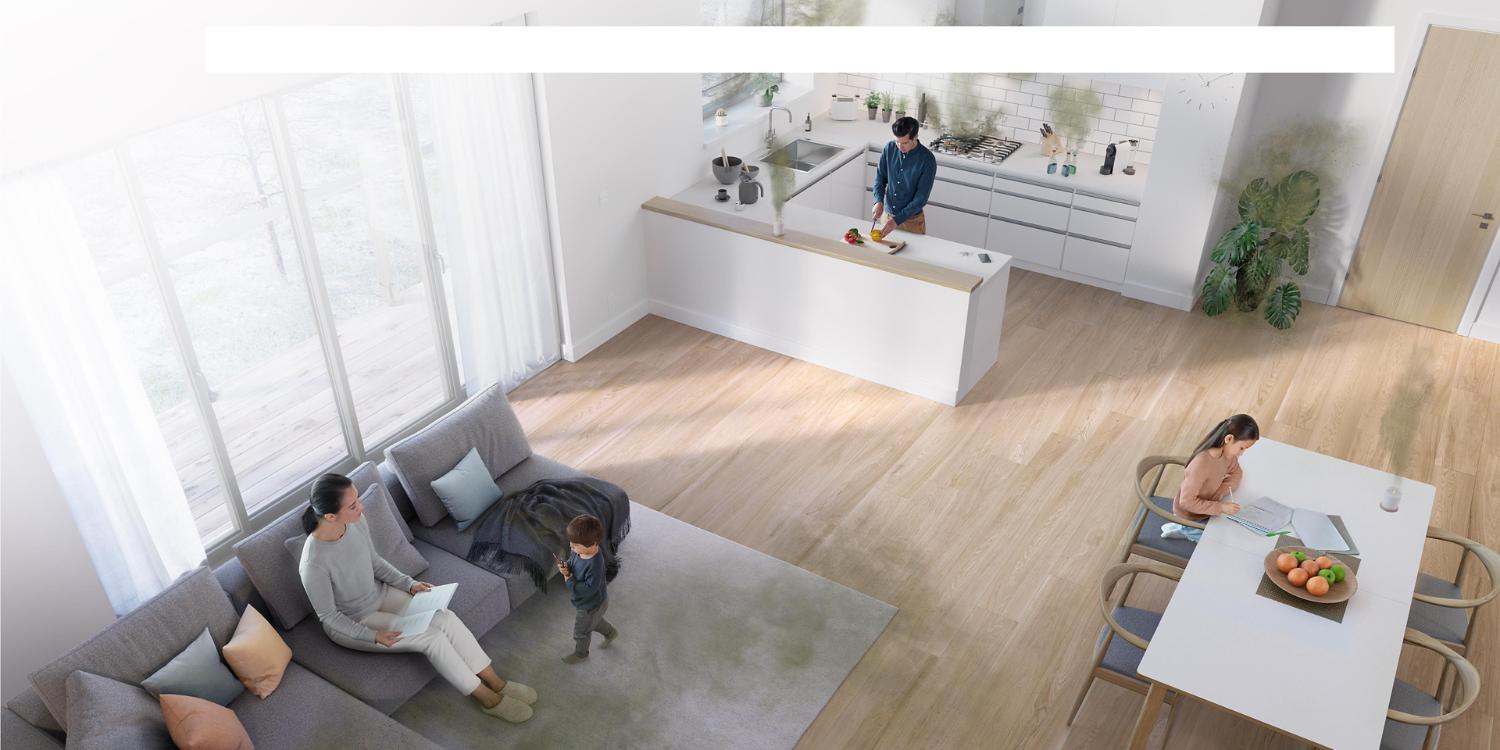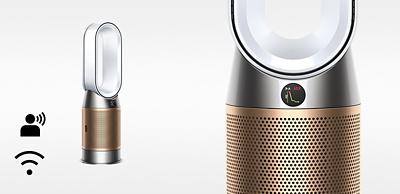
Indoor air can be up to 5x more polluted than the air outside¹
Home isn't always a safe haven. On average, we spend over 14 hours a day breathing polluted air generated inside the house.
Moments of indoor air pollution
A good night's sleep
People share their bedrooms with a collection of biological particles and allergens that are often inhaled during sleep.
Airborne dust, bacteria and pollen can build up in the bedroom where ventilation is typically worse than other rooms. When doors and windows are closed at bedtime, exposure to trapped pollutants is prolonged. Poor ventilation in the bedroom for an extended period can result in worsened sleep efficiency and the ability to maintain sleep.
Decorating the nursery
The smell of new paint might fade over time, but the emission of VOCs like formaldehyde can persist for years.
Formaldehyde is a colourless gas released by some furniture and DIY materials such as paint, wallpaper and fabrics. Almost every home contains small amounts of formaldehyde, but concentrations increase during interior decoration projects. Prolonged exposure to the emission of formaldehyde can cause irritation of the eyes, throat and lungs.
Working out at home
During periods of physical activity, more airborne pollutants are inhaled as a result of faster breathing.
Dust mites, pollen, skin cells, and pet dander are typical allergens found in house dust composition. Movement throughout the home can disturb settled dust, making it airborne. Breathing in allergens can be associated with asthma and eczema, and inflammation of the nose including nasal congestion, a runny nose, and sneezing.
When disinfectants and aerosols are sprayed indoors, the particles form vapours that are then breathed in.
Volatile organic compounds (VOCs) are potentially harmful gases emitted by household products like multi-purpose sprays and air freshener. When scented cleaning products are used on a regular basis, VOC concentrations in the home increase. Short-term exposure to high concentrations can result in wheezing and irritation to the eyes, nose and throat.
The proteins found in pet’s hair, saliva and urine can trigger allergic reactions for some pet owners.
Pet dander is made up of tiny, microscopic flakes of skin and protein particles. As pets move around the home, their dander lingers in the air before settling on surfaces. Exposure to these airborne particles can cause unpleasant symptoms such as sneezing, breathing difficulties, watering or itchy eyes, skin rashes, and eczema flares.
Frying food with oil at high temperatures can release oil particles and odours into the air.
The emissions released from cooking can vary based on the cooking temperature, method and ingredients. Higher emissions are generated when ingredients that are high in fat, like oil and salmon, are cooked at high temperatures. Even after cooking, potentially harmful pollutants which can be toxic to people and pets hang around in the air.
Dyson air purifiers capture 99.95% of pollutants as small as 0.1 microns.²


Captures dust, allergens, bacteria and gases.² Even destroys formaldehyde.³
Engineered to clean the air at every moment
Senses and reports automatically
Most indoor pollutants can't be seen or smelled. Dyson air purfiers constantly monitor your indoor air quality – automatically sensing airborne particles and then displaying real-time reports on the LCD screen.⁴
What goes in, stays in
In our latest air purifiers it's not just the filter that's sealed to HEPA 13 standard, it's the whole machine.² This prevents pollutants from being expelled back into the room after they've been removed from the airflow.
Purifies the whole room
We test our machines beyond industry standards, so they're suitable for real homes. Only Dyson air purfiers are engineered with Air Multiplyer™ technology, to draw in distant pollutants and project purified air into every corner of the room.⁵
See our frequently asked questions
Choose your model
Explore Dyson purifiers and find the right one for your home
Frequently asked questions
Yes, our latest purifiers remove 97% of cooking odours⁶ and cat urine odours.⁷
Dyson's lastest purifiers are 20% quieter than the previous model⁸, making them ideal for bedrooms and working environments. Night mode initiates the quietest setting and a dimmed display, while a sleep timer enables you to pre-set intervals of use.
We recommend replacing the HEPA+Carbon filter every 12 months (based on 12 hours a day of use) – so this may vary depending on usage and pollution levels. You'll be notified via the Dyson Link app or LCD screen when it's time to replace the filter. The formaldehyde-destroying catalytic filter never needs replacing.
Yes. Diffused mode diverts airflow through the back of the machine to purify the whole room, without cooling you. This means you can use your Dyson purifier all year round.
Dyson engineers are perfectionists. Channelling our relentless dissatisfaction, we have re-engineered the Dyson Purifier range to be our first purifiers fully sealed to HEPA H13 standard. Capturing 99.95% of ultrafine particles and preventing pollutants from leaking back into the air you breathe.²
-

Discover all Dyson purifiers
Take control of your home environment with Dyson purifiers that also heat, humidify and cool you.
¹ US Environmental Protection Agency
² Gas capture rates vary.
³ Third party full machine testing based on GB/T 18801-2015 formaldehyde cumulative clean mass testing with continuous injection until plateau of formaldehyde CADR is achieved. Results may vary in practice.
⁴ In automode.
⁵ In maximum setting. Tested for air projection (DTM801) and purification coverage in a 2860 ft3 room (TM-003771).
⁶ Tested to removal of grilled salmon and Korean barbecue odour to EN 13725.
⁷ Tested to removal of cat urine odour to EN 13725.
⁸ Compared to the previous TP04 model.





